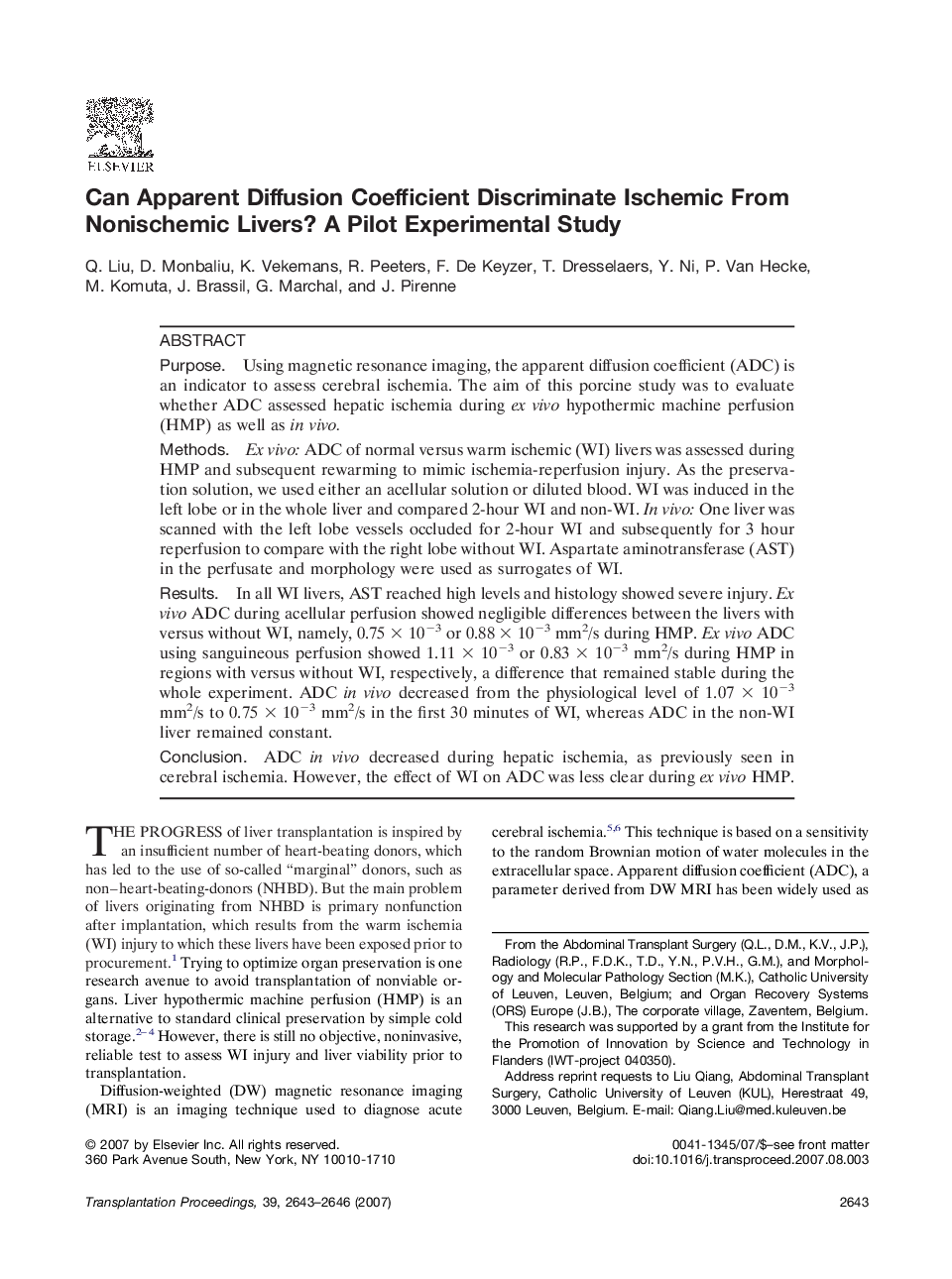| Article ID | Journal | Published Year | Pages | File Type |
|---|---|---|---|---|
| 4262589 | Transplantation Proceedings | 2007 | 4 Pages |
PurposeUsing magnetic resonance imaging, the apparent diffusion coefficient (ADC) is an indicator to assess cerebral ischemia. The aim of this porcine study was to evaluate whether ADC assessed hepatic ischemia during ex vivo hypothermic machine perfusion (HMP) as well as in vivo.MethodsEx vivo: ADC of normal versus warm ischemic (WI) livers was assessed during HMP and subsequent rewarming to mimic ischemia-reperfusion injury. As the preservation solution, we used either an acellular solution or diluted blood. WI was induced in the left lobe or in the whole liver and compared 2-hour WI and non-WI. In vivo: One liver was scanned with the left lobe vessels occluded for 2-hour WI and subsequently for 3 hour reperfusion to compare with the right lobe without WI. Aspartate aminotransferase (AST) in the perfusate and morphology were used as surrogates of WI.ResultsIn all WI livers, AST reached high levels and histology showed severe injury. Ex vivo ADC during acellular perfusion showed negligible differences between the livers with versus without WI, namely, 0.75 × 10−3 or 0.88 × 10−3 mm2/s during HMP. Ex vivo ADC using sanguineous perfusion showed 1.11 × 10−3 or 0.83 × 10−3 mm2/s during HMP in regions with versus without WI, respectively, a difference that remained stable during the whole experiment. ADC in vivo decreased from the physiological level of 1.07 × 10−3 mm2/s to 0.75 × 10−3 mm2/s in the first 30 minutes of WI, whereas ADC in the non-WI liver remained constant.ConclusionADC in vivo decreased during hepatic ischemia, as previously seen in cerebral ischemia. However, the effect of WI on ADC was less clear during ex vivo HMP.
